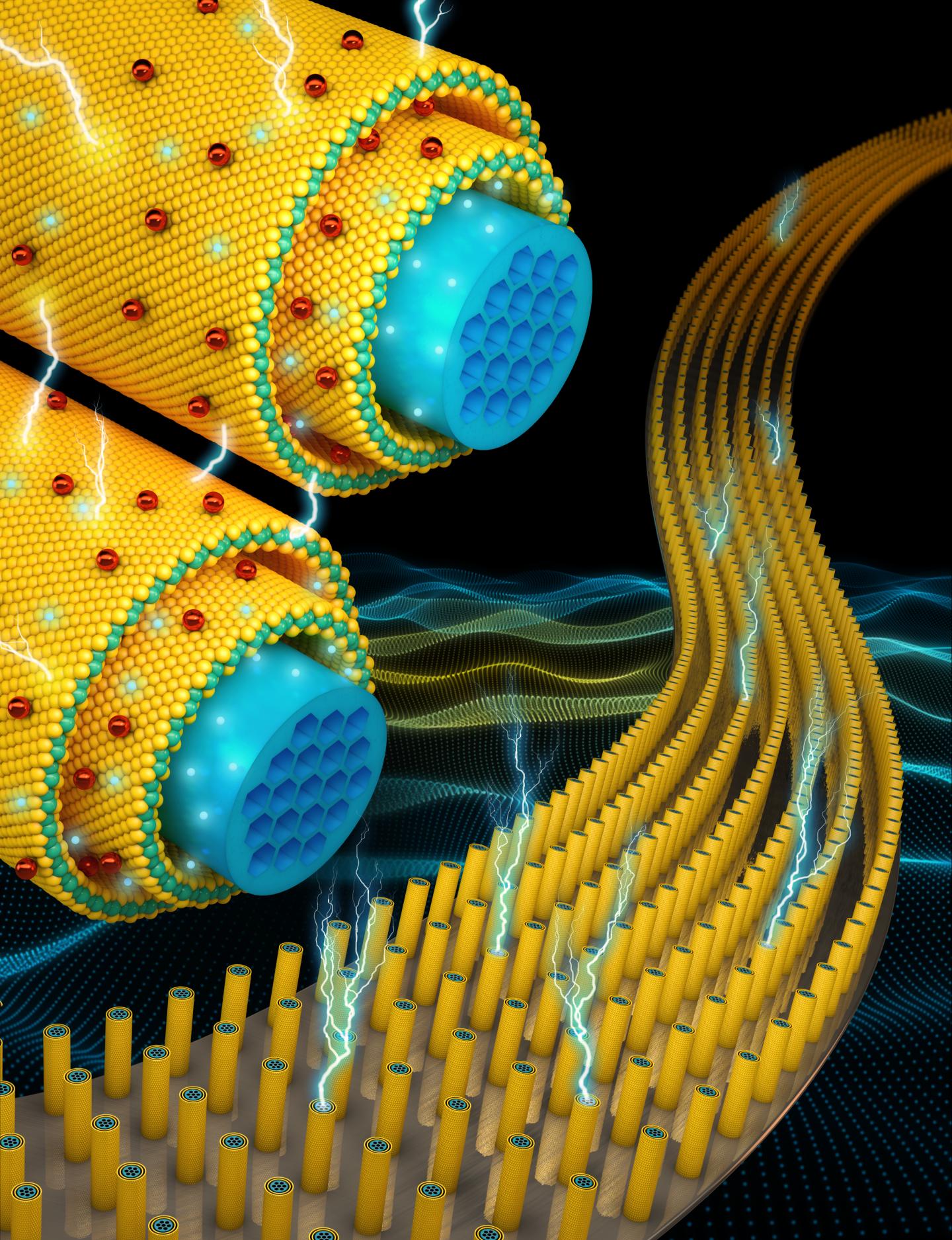 University of Central Florida researchers have developed a radical new supercapacitor design that could one day replace lithium-ion batteries, allowing users to charge a mobile phone in a few seconds and with a charge that lasts a week, according to the researchers. The new battery would be flexible and a fraction of the size of a lithium-ion battery.
University of Central Florida researchers have developed a radical new supercapacitor design that could one day replace lithium-ion batteries, allowing users to charge a mobile phone in a few seconds and with a charge that lasts a week, according to the researchers. The new battery would be flexible and a fraction of the size of a lithium-ion battery.
The proof-of-concept design is based on a hybrid supercapacitor composed of a core with millions of highly conductive nanowires coated with shells of two-dimensional materials.* It combines fast charging and discharging (high power density) and high storage capacity (high energy density).



Supercapacitor design: an array of electrically conductive nanowires (orange) with metal current-collector covering (blue) (credit: Nitin Choudhary et al./ACS Nano)



Optical image of core/shell nanowires on a tungsten foil under mechanical bending (left). Corresponding SEM image (right) shows high-density, well-aligned nanowires along with their faceted surface (inset). The scale bar in the inset is 500 nm. (credit: Nitin Choudhary et al./ACS Nano)
Another advantage would be “cyclic stability” (how many times a battery can be charged, drained and recharged before beginning to degrade). A lithium-ion battery can be recharged fewer than 1,500 times without significant failure, compared to recently developed supercapacitors based on two-dimensional materials, which can be recharged more than 30,000 times.



Supercapacitor prototype showing flexible design (credit: (credit: University of Central Florida)
Electric vehicles could also benefit from longer-range operation and sudden bursts of power and speed. The flexible material could mean a significant advancement in wearable tech, according to the researchers, and would also avoid the risk of overheating and explosion with lithium-ion batteries.







